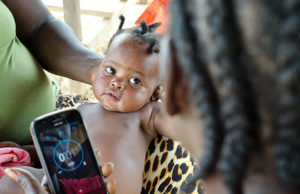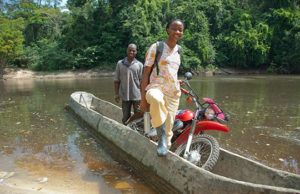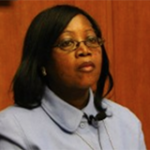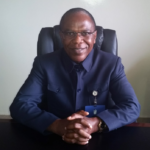 Illness is universal, access to healthcare is not. The 71st World Health Assembly will be the first since the World Bank and World Health Organization released new findings showing that over half of the world’s 7.3 billion people, including a billion in remote rural communities, lack access to essential health services. [1] These include prenatal care, vaccinations, and malaria treatment. Compounding this crisis is a massive shortage of healthcare workers, which is forecast to grow to 18 million by 2030. [2]
Illness is universal, access to healthcare is not. The 71st World Health Assembly will be the first since the World Bank and World Health Organization released new findings showing that over half of the world’s 7.3 billion people, including a billion in remote rural communities, lack access to essential health services. [1] These include prenatal care, vaccinations, and malaria treatment. Compounding this crisis is a massive shortage of healthcare workers, which is forecast to grow to 18 million by 2030. [2]
Investing in community health workers (CHWs), alongside more nurses and doctors, can help close this gap. Expanding the coverage of evidence based healthcare interventions through CHWs in the 73 countries with 97% of the world’s preventable maternal and child deaths could save at least 2.5 million lives each year. [3] But, CHW programmes vary widely in quality. Many don’t reach full potential because they lack proper investment—especially payment. The majority of CHWs are either volunteers who receive no pay or semi-compensated cadres. [4]
We have seen this firsthand. Approximately 60% of rural Liberians lack access to healthcare, or live more than 5 km (one hours walk) from the nearest clinic. [5] In response, Liberia’s Ministry of Health initially trained a national cadre of community health volunteers. But, because they were unpaid and undersupported, many dropped out or were ineffective in practice. Data showed very low coverage rates of essential health services. [6] In one study, the proportion of children in rural areas receiving treatment for acute respiratory infection remained at 6.6%. [7] This inequality places us all at risk. The lack of paid, well supported CHWs helped fuel the spread of the 2014-16 Ebola epidemic from rural communities into cities, claiming thousands of lives.
 In 2015, as the Ebola epidemic was brought under control, we enacted bold reforms. In addition to keeping primary healthcare free of charge, Liberia’s Ministry of Health revised its National Community Health Services Policy. [5] We decided that community health workers should be paid and that they should be managed by clinic based supervisors, such as nurses. We decided to increase the numbers of CHWs in “last mile” communities more than 5 km away from a clinic, and that they should be trained more comprehensively in evidence based services. Finally, we strengthened the systems supporting them, including the supply chain, logistics, and health information.
In 2015, as the Ebola epidemic was brought under control, we enacted bold reforms. In addition to keeping primary healthcare free of charge, Liberia’s Ministry of Health revised its National Community Health Services Policy. [5] We decided that community health workers should be paid and that they should be managed by clinic based supervisors, such as nurses. We decided to increase the numbers of CHWs in “last mile” communities more than 5 km away from a clinic, and that they should be trained more comprehensively in evidence based services. Finally, we strengthened the systems supporting them, including the supply chain, logistics, and health information.
In July 2016, Liberia’s Ministry of Health led a coalition of non-governmental organisations and donors to launch the National Community Health Assistant Program. That coalition consisted of organisations including the International Rescue Committee, Last Mile Health, Partners in Health, Plan International, CHAI, and funding partners including USAID, UNICEF, the Global Financing Facility, the Global Fund for AIDS, Tuberculosis and Malaria, and leading philanthropists.
We have seen remarkable progress. As of March 2018, Liberia has hired, trained, and equipped nearly 3000 community health assistants (CHAs) and over 300 supervisors (primarily nurses) across 13 of 15 counties—reaching 70% of the goal. These health workers have carried out over 340 000 home visits; treated over 61 000 childhood cases of pneumonia, malaria, or diarrhoea; screened nearly 75 000 children for malnutrition; and supported 30 000 pregnancy visits. They’ve also identified over 1700 potential infectious disease trigger events. [8] At our 2017 national health conference, multiple counties reported increases in children receiving malaria, pneumonia, and diarrhoea treatment of over 50%, and facility based deliveries in one remote district increased from 55% to 84%. [9,10,11]
We continue to optimise the programme by focusing on quality. We are developing a national performance management system called the “implementation fidelity initiative” (IFI). This is part of the global Integrating Community Health programme led by USAID, UNICEF, and the Bill and Melinda Gates Foundation, and it monitors the strengths and weaknesses of the CHA programme. [12] The IFI focuses on key metrics such as timeliness of CHA payments, restocking of supplies, quality of clinical supervision, and CHA competency. Each quarter, partners convene to review this data, translating new insights into quality improvement activities. For example, the IFI has inspired initiatives to strengthen the supply chain and use mobile technology to enhance training for CHAs and supervisors. Ultimately, the IFI system improves accountability and adaptability, helping to maximise return on investment in the programme.
Paying and investing in CHWs isn’t just the right thing to do; it’s the smart thing to do to accelerate universal health coverage. Liberia’s CHW policy reforms echo successful experiences in Bangladesh, Brazil, Ethiopia, and Rwanda, among others. More countries should adopt similar reforms. Together, we can realise the health-for-all vision articulated in the Declaration of Alma Ata forty years ago. No one has to be left behind, if we’re willing to go as far as it takes.
We are grateful to Mallika Raghavan and Siobhan Kelley for their support and contributions to this article.
 Wilhelmina Jallah is the minister of health of the Republic of Liberia.
Wilhelmina Jallah is the minister of health of the Republic of Liberia.
 Francis Kateh is the chief medical officer/deputy minister of health of the Republic of Liberia.
Francis Kateh is the chief medical officer/deputy minister of health of the Republic of Liberia.
 Raj Panjabi is the chief executive of Last Mile Health and assistant professor at Harvard Medical School.
Raj Panjabi is the chief executive of Last Mile Health and assistant professor at Harvard Medical School.
Competing interests: None declared.
Photos: Credit to Last Mile Health for both photos.
References:
1 World Bank. 2017. Tracking universal health coverage : 2017 global monitoring report (English). Washington, D.C. : World Bank Group. http://documents.worldbank.org/curated/en/640121513095868125/Tracking-universal-health-coverage-2017-global-monitoring-report.
2 Limb M. World will lack 18 million health workers by 2030 without adequate investment, warns UN. BMJ 2016;354:i5169.
3 Perry H, Zulliger, R, Rogers MM. (2014). Community Health Workers in Low-, Middle-, and High-Income Countries: An Overview of Their History, Recent Evolution, and Current Effectiveness. Annual Review of Public Health, 35(1), 399-421. doi:10.1146/annurev-publhealth-032013-182354
4 Gichaga A, Milestone D, Sharma P. Strengthening Primary Health Care through Community Health Workers: Closing the $2 Billion Gap. Financing Alliance for Health, USAID. https://www.usaid.gov/sites/default/files/documents/1864/USAID_FAH_Report_digital_version_nov21-508.pdf.
5 Revised national community health services policy 2016–2021. Ministry of Health, Republic of Liberia.
6 Liberia Institute of Statistics and Geo-Information Services. Liberia Demographic and Health Survey 2013.
7 Kenny A, Basu G, Ballard M, et al. Remoteness and maternal and child health service utilization in rural Liberia: A population-based survey. J Glob Health. 2015 Dec;5(2):020401. doi: http://dx.doi.org/10.7189/jogh.05.020401 PMID: 26207180.
8 Community Based Information System. March 2018. Ministry of Health, Republic of Liberia.
9 Boima T. Overview of the National Community Health Assistant Program. Presentation at 2017 National Health Conference. December 7, 2017. Ministry of Health, Republic of Liberia.
10 White E, Downey J, Sathananthan V, et al. Effect of a community health worker intervention on childhood disease treatment coverage in rural Liberia: a difference-in-differences analysis. American Journal of Public Health. (in press).
11 Luckow PW, Kenny A, White E, et al. (2017). Implementation research on community health workers’ provision of maternal and child health services in rural Liberia. Bulletin of the World Health Organization, 95(2), 113-20. doi:10.2471/blt.16.175513.
12 Integrating Community Health Program Summary. USAID/UNICEF www.usaid.gov/what-we-do/global-health/cross-cutting-areas/integrating-community-health-program.
